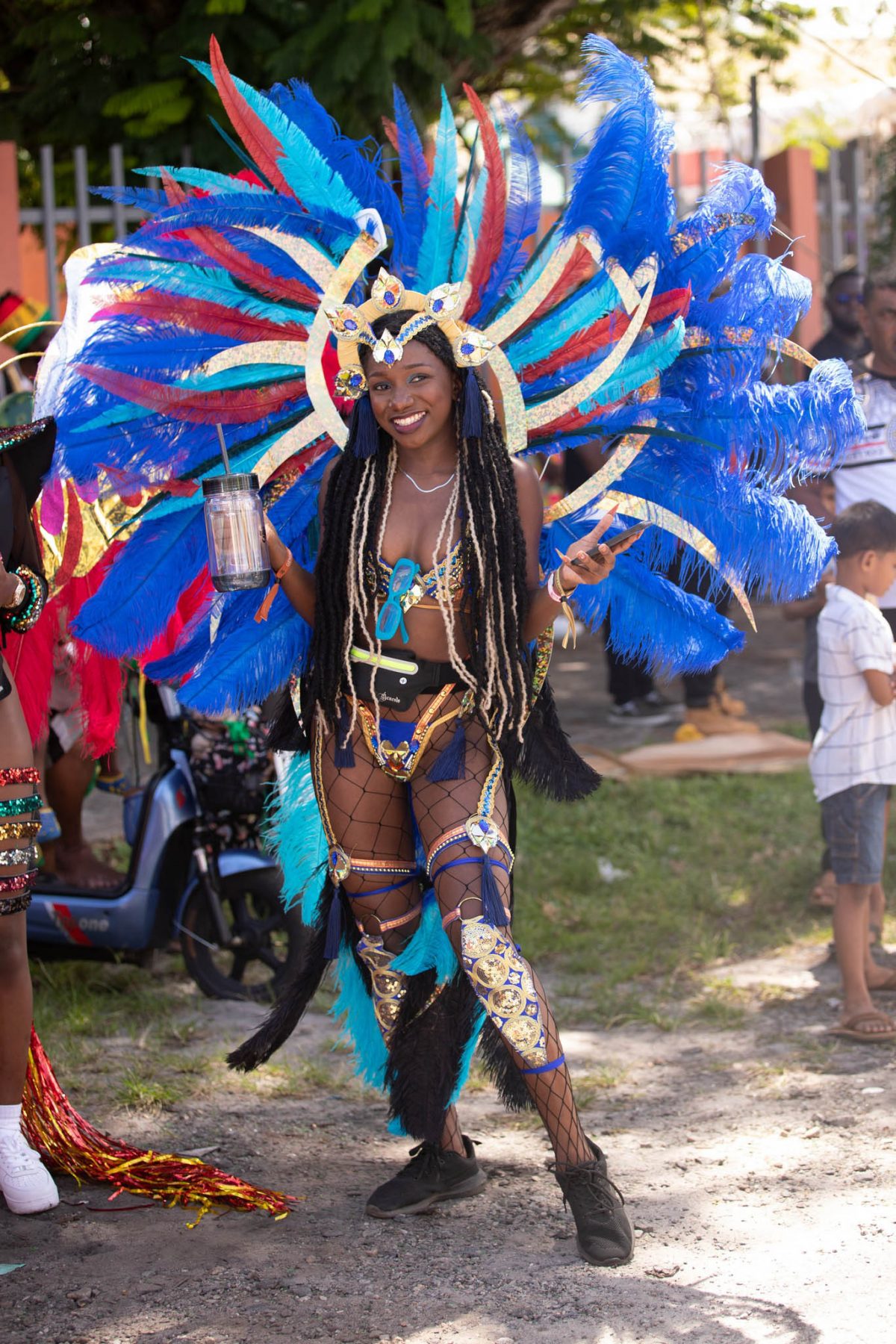 The costumes from Guyana Carnival reminded me of the handbags from the diffusion line of Michael Kors. Bland and overpriced with a dash of elementary level aesthetics. From the sequin-styled leg accessories to wired bras that appear be the only known Carnival costume idea year after year, to the party-like streamers hopelessly dangling, to the men jumping around in colourful swim trunks, it all felt like a lazy copy and paste effort to bolster Guyana as a carnival destination.
The costumes from Guyana Carnival reminded me of the handbags from the diffusion line of Michael Kors. Bland and overpriced with a dash of elementary level aesthetics. From the sequin-styled leg accessories to wired bras that appear be the only known Carnival costume idea year after year, to the party-like streamers hopelessly dangling, to the men jumping around in colourful swim trunks, it all felt like a lazy copy and paste effort to bolster Guyana as a carnival destination.
With prices ranging from US$650 to US$800 dependent on costume design and placement within the band which also covered food, drinks, merchandise, music and security, some would rightfully argue that they were competitive with other countries that celebrate carnival. But were they really?
In most other places where carnival thrives, it has been relatively nurtured from its conception despite falling prey over the years to commercialisation and capitalism. Carnival by its very nature represents rebellion; a cultural protest by Black people for Black people. Historically, the revelry by participants that is so contagious was done to mock the authorities: showing freedom without restraint and control. Its complex history is rooted in what freedom means socially, politically and psychologically. Most artists use carnival as a time to visually narrate the society’s social issues and its state of affairs.
For example, Guyana-born carnival artist Peter Minshall has done this superbly in Trinidad and Tobago. Using a delicate balance between costume design, street theatre and dance he has managed to convey chilling reality checks on greed, capitalism and its excessiveness, technological madness, prejudice and disease.
Dissecting what was just displayed here, one has to ask oneself who will remember these five-minute, hyped, Instagram explore costumes. Can such work sustain a now supposedly budding carnival culture? What do we hope will set us aside from those places that have grown and nurtured carnival from an artistic purpose? Is it oil money? If it is, from the looks of it, it would appear as if it hasn’t yet arrived.
Diffusion lines serve a purpose in fashion and for most part they tend to be successful because though usually bland in design they are associated to the brands’ unique selling point whether that be heritage, design technique or overall aesthetic. These are things that can’t be overruled. Diffusion lines are central to the profits of most labels for they represent the market segment that wants the affiliation to the brand without breaking the bank.
Perhaps Michael Kors was a stretch, this felt more like Ed Hardy.
Remember them?
Yeah. Neither do I.









